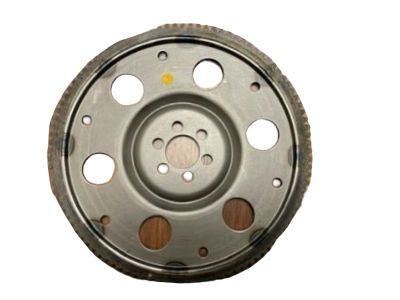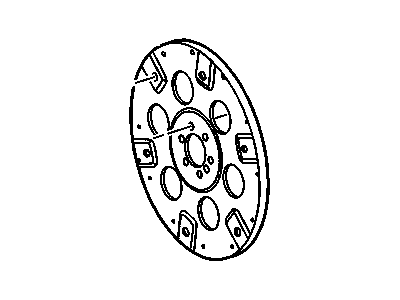
My Garage
My Account
Cart
Genuine Chevrolet Metro Flywheel
Clutch Flywheel- Select Vehicle by Model
- Select Vehicle by VIN
Select Vehicle by Model
orMake
Model
Year
Select Vehicle by VIN
For the most accurate results, select vehicle by your VIN (Vehicle Identification Number).
3 Flywheels found
Chevrolet Metro Engine Crankshaft FLYWHEEL
Part Number: 91173838$96.14 MSRP: $178.38You Save: $82.24 (47%)Ships in 1-2 Business Days
Chevrolet Metro Flywheel
Each OEM Chevrolet Metro Flywheel we offer is competitively priced and comes with the assurance of the manufacturer's warranty for the part. Furthermore, we guarantee the speedy delivery of your orders right to your doorstep. Our hassle-free return policy is also in place for your peace of mind.
Chevrolet Metro Flywheel Parts Questions & Experts Answers
- Q: How to properly remove and reinstall the flywheel/driveplate on Chevrolet Metro?A:Raise the vehicle and support it securely on jackstands, then remove the transaxle. If it's leaking, now would be a very good time to replace the front pump seal/O-ring for automatic transaxle models. Remove the pressure plate and clutch disc for manual transaxle equipped models, and check or replace the clutch components and pilot bearing. For automatic transaxle models, mark the relationship between the driveplate and crankshaft to ensure correct alignment during reinstallation. Remove the bolts that secure the flywheel/driveplate to the crankshaft, immobilizing it by jamming a heavy screwdriver into the ring gear teeth if it turns. Carefully remove the flywheel/driveplate from the crankshaft, supporting it while removing the last bolt due to its weight. Clean the flywheel to remove grease and oil, inspecting the surface for cracks, rivet grooves, burned areas, and score marks, with light scoring removable using emery cloth. Check for cracked and broken ring gear teeth, laying the flywheel on a flat surface to check for warpage with a straightedge. Clean and inspect the mating surfaces of the flywheel/driveplate and the crankshaft, replacing the crankshaft oil seal if it is leaking before reinstalling the flywheel/driveplate. Position the flywheel/driveplate against the crankshaft, aligning the hole in the flywheel with the alignment dowel in the crankshaft for manual transaxle models, or aligning the marks made during removal for automatic transaxle models. Before installing the bolts, apply thread locking compound to the threads and tighten them to the specified torque while keeping the crankshaft from turning. The remainder of installation follows the reverse of the removal procedure.











